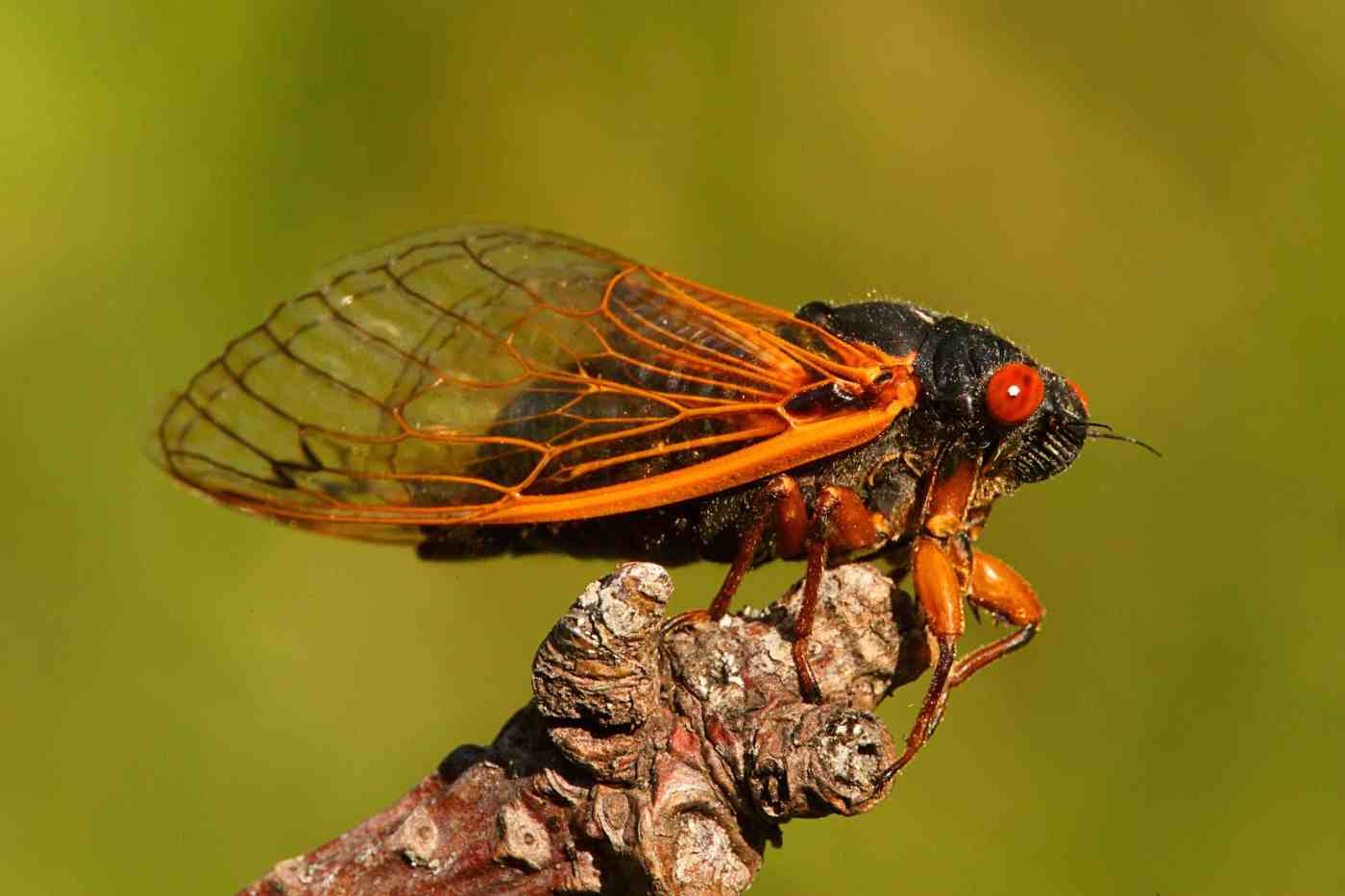FOREWARD
Hello, humans, and welcome to the inaugural post of EntoExtracts, a series where I talk about current important events and issues within the field of entomology. This series won’t follow any specific schedule, but it will be posted often if possible within my own personal schedule. Hope you enjoy, and let’s get started!
TODAY’S TOPIC:
Emergence of Brood IX of 17-year periodical cicadas
THE RETURN OF THE BABY BOOMER ERA

17-year periodical cicadas, also known as pharaoh cicadas (Magicicada septendecim), are easily the most well-known species of cicada, popularized by the 17-years spent underground by the nymphs, in which they feed on the fluids within the the xylem cells of the roots of deciduous trees. They are native to the eastern US.
This year marks the arrival of Brood IX, which last appeared in 2003. This brood is native to southwestern Virginia, southern West Virginia, and western North Carolina. For my readers who live in these states, be on the look out for emerging nymphs and abandoned exuvia (molted exoskeleton).

Nymphs and their exuvia can be found on the most inferior section of tree trunks, near the ground and roots.
This brood should be active until around mid-July, where then we will have to wait until 2037 to see them again! During the day, be sure to listen for their calling songs.
THERE’S FUNGUS AMONG US
This brood has been recently susceptible to Massopora fungal infections, causing the abdomen of the cicada to become dissected and the anterior half being replaced with the fungus. It is currently unknown if infected females can still lay eggs

As well as potentially preventing the cicadas from reproducing, the fungus also drastically affects their behaviour, causing them to be innately stressed. The fungus can be transferred between imagoes (adults).
Image credit: Matt Kasson (@kasson_wu)
BROOD CHART
| Brood | Name | Cycle (years) | Last emergence | Next emergence | Location |
|---|---|---|---|---|---|
| Brood I | Blue Ridge brood | 17 | 2012 | 2029 | Western Virginia, West Virginia |
| Brood II | East Coast brood | 17 | 2013 | 2030 | Connecticut, Maryland, North Carolina, New Jersey, New York, Pennsylvania, Delaware, Virginia, District of Columbia |
| Brood III | Iowan brood | 17 | 2014 | 2031 | Iowa |
| Brood IV | Kansan brood | 17 | 2015 | 2032 | Eastern Nebraska, southeastern Iowa, eastern Kansas, western Missouri, Oklahoma, north Texas |
| Brood V | 17 | 2016 | 2033 | Eastern Ohio, Western Maryland, Southwestern Pennsylvania, Northwestern Virginia, West Virginia, New York (Suffolk County | |
| Brood VI | 17 | 2017 | 2034 | Northern Georgia, western North Carolina, northwestern South Carolina | |
| Brood VII | Onondaga brood | 17 | 2018 | 2035 | Central New York (Onondaga, Cayuga, Seneca, Ontario, Yates counties |
| Brood VIII | 17 | 2019 | 2036 | Eastern Ohio, western Pennsylvania, northern West Virginia | |
| Brood IX | 17 | 2003 | 2020 | southwestern Virginia, southern West Virginia, western North Carolina | |
| Brood X | Great eastern brood | 17 | 2004 | 2021 | New York, New Jersey, Pennsylvania, Delaware, Maryland, District of Columbia, Virginia, West Virginia, North Carolina, Georgia, Tennessee, Kentucky, Ohio, Indiana, Illinois, Michig |
| Brood XI | 17 | 1954 | Extinct | Last seen in 1954 in Ashford, Connecticut along the Fenton River | |
| Brood XIII | Northern Illinois brood | 17 | 2007 | 2024 | Northern Illinois and in parts of Iowa, Wisconsin, and Indiana |
| Brood XIV | 17 | 2008 | 2025 | Southern Ohio, Kentucky, Tennessee, Massachusetts, Maryland, North Carolina, Pennsylvania, northern Georgia, Southwestern Virginia and West Virginia, and parts of New York and New Jersey | |
| Brood XIX | Great Southern Brood | 13 | 2011 | 2024 | Alabama, Arkansas, Georgia, Indiana, Illinois, Kentucky, Louisiana, Maryland, Missouri, Mississippi, North Carolina, Oklahoma, South Carolina, Tennessee, and Virginia |
| Brood XXI | Floridian Brood | 13 | 1870 | Extinct | Last recorded in 1870, historical range included the Florida panhandle |
| Brood XXII | Baton Rouge brood[28] | 13 | 2014 | 2027 | Louisiana, Mississippi |
| Brood XXIII | Lower Mississippi River Valley brood | 13 | 2015 | 2028 | Arkansas, Illinois, Indiana, Kentucky, Louisiana, Missouri, Mississippi, Tennessee |
CONCLUSION
Watching the emergence of periodical cicadas is an amazing thing to experience, and it is also the ultimate test of patience for an entomologist! I won’t be able to experience this emergence since I don’t live in the US, so I ask my readers who live in the area of Brood IX and are just as passionate as I am about it to share any pictures you manage to take so that way myself and everyone else who reads this site can experience with you!
Thank you for reading, and I hope you enjoyed the first entry into EntoExtracts! 😀







Dodaj komentarz